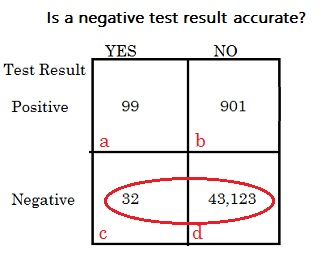What is Verification Bias?
Verification bias (also called detection bias or workup bias) is the selective use of a single “gold standard” diagnostic test in a study. Some patients are given the “gold standard” verification test, while others are not; The reason for this is that many gold standard tests are expensive, invasive or risky. When your study only includes patients whose condition has been verified with the gold standard test, the results from your analysis will be biased (i.e. different from what they should be).
This type of bias can be avoided by including a spectrum of patients who are at risk for a particular disease or condition, not just those patients identified with the gold standard.
Verification bias is also called “test referral bias”, which is sometimes shortened to “referral bias.” The two types of bias (i.e. verification bias and referral bias) are therefore sometimes confused, but they mean quite different things.
Example
Let’s say people visiting the E.R. with wrist swelling are more likely to get x-rays than those without swelling. That means a higher proportion of people with wrist fractures and swelling will receive the “gold standard” x-rays than people with wrist fractures and no swelling. If you only include people with swelling (i.e. those who received the gold standard of an x-ray) in your study, then you’re leaving out a whole group of people with wrist fractures.
A study that only includes those patients receiving a gold standard diagnostic test runs the risk of erroneous conclusions. For example, sensitivity (the true positive rate) can be overestimated and specificity (the true negative rate) can be underestimated.

Sensitivity and specificity are calculated from information in a contingency table like the one above (sensitivity = a/(a+c); specificity = (d/d+b)). Decreasing the information in cells c and d will lead to increased sensitivity and decreased specificity.
Partial and Differential Verification Bias
Partial verification bias applies when only a proportion of patients (e.g. those that have swollen ankles) are tested with the gold standard. This type of bias happens when the selection is linked in some way to the test outcome. The solution would be to test everyone with the gold standard, which is usually neither practical nor financially possible.
Differential verification bias happens when all patients are verified, but more than one reference standard is used. For example, the test-positive group gets x-rays, while the test-negative group gets a follow-up appointment for a re-check.
Avoiding Verification Bias
Verification bias can’t be completely eliminated from a study unless that study is free of screen test results. It can be minimized by selecting an appropriate study design. For example, you could include a random sample of people who test negative for the finding or test you are studying. You could also adjust statistically for the bias, which can be cumbersome (see Ankerst et. al, p.325 for an example) and not always effective.
References
Ankerst, D. et. al. Prostate Cancer Screening: Second Edition. Springer Science & Business Media,
Price, C. & Christenson, R. (Eds.). Applying Evidence Based Laboratory Medicine: From Principles to Outcomes. 2003 – Medical.
Vogt, W.P. (2005). Dictionary of Statistics & Methodology: A Nontechnical Guide for the Social Sciences. SAGE.